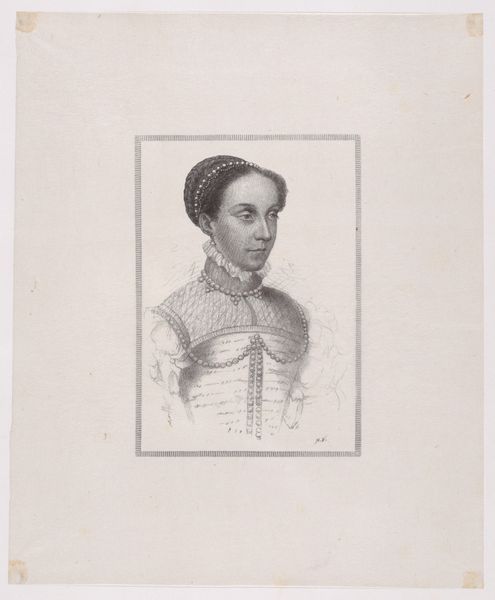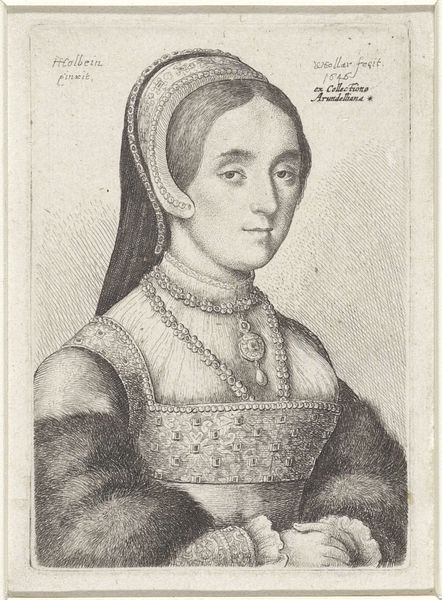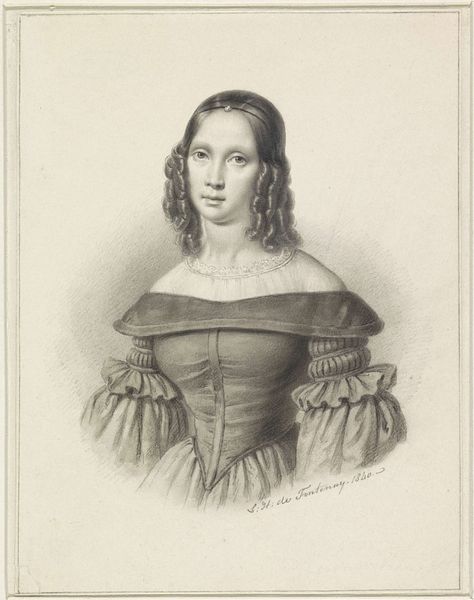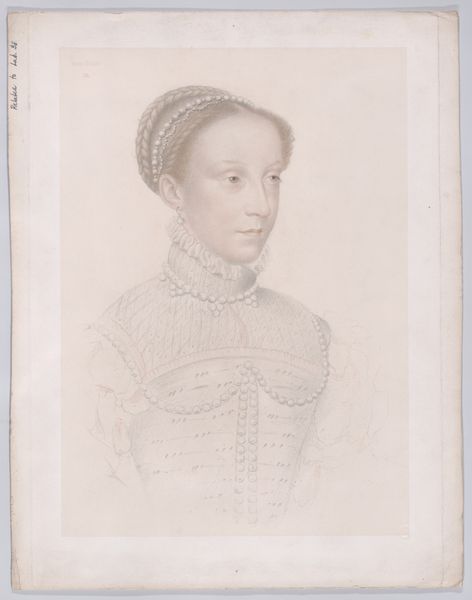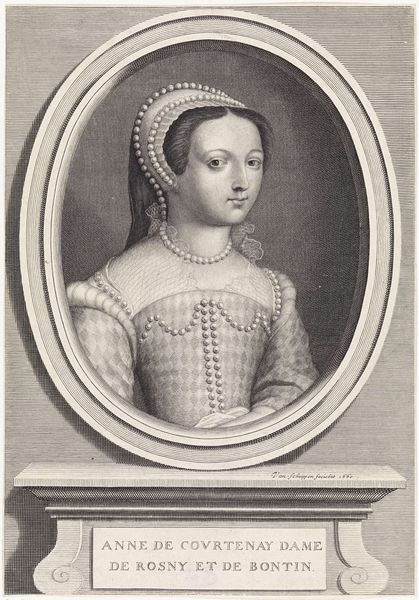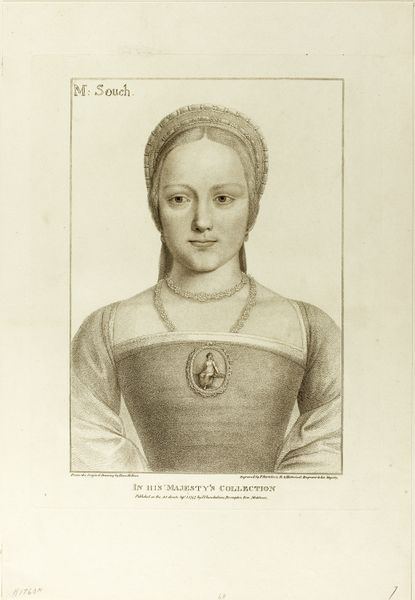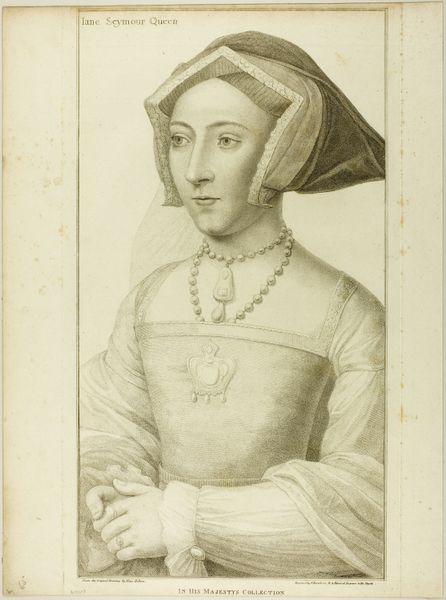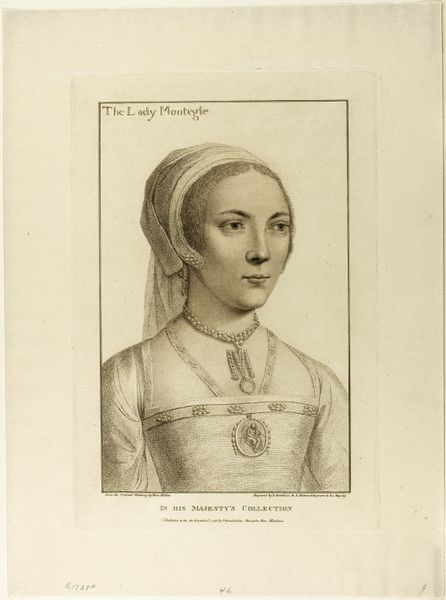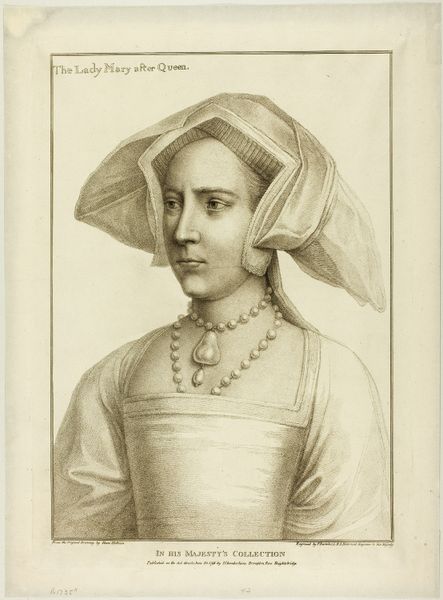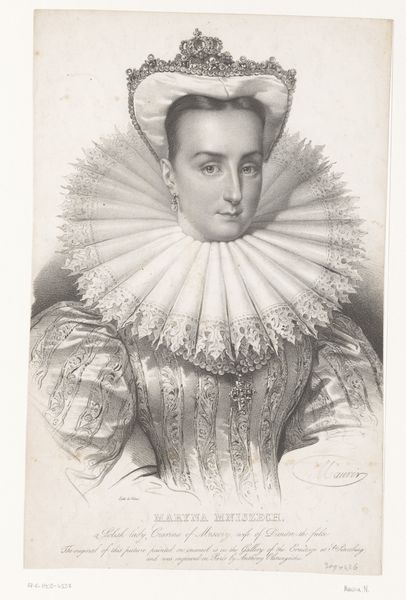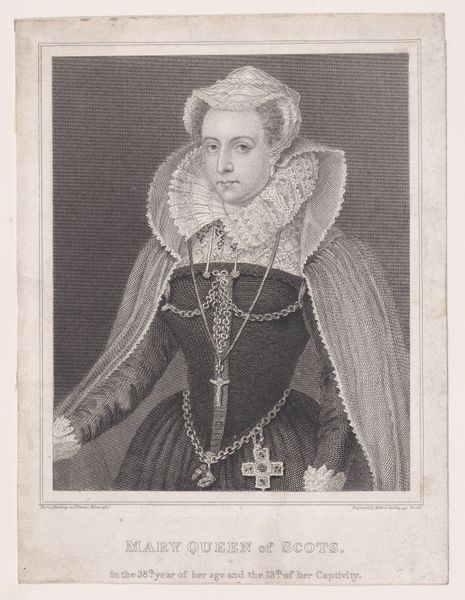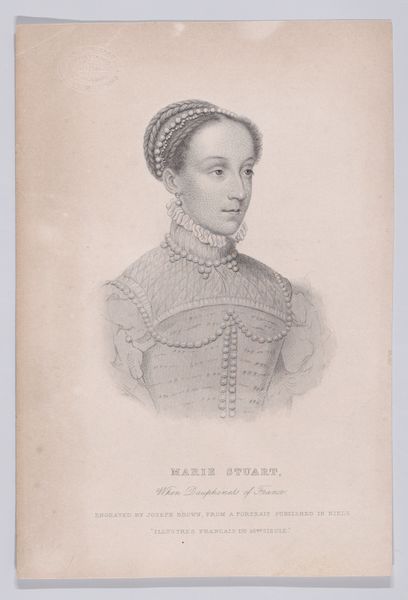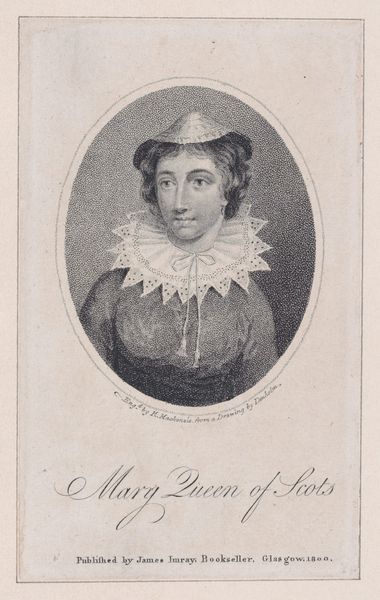
Dimensions: Sheet: 12 1/16 × 9 5/8 in. (30.7 × 24.4 cm)
Copyright: Public Domain
Adolphe Pierre Riffaut created this print of Mary, Queen of Scots using a burin to incise lines into a copper plate, sometime before 1859. The process of engraving is laborious; the artist guides the sharp tool to remove slivers of metal, creating grooves that hold ink. This print would have required careful wiping of the plate to remove excess ink, and a press to transfer the image to paper. The materiality of the engraving contributes to the overall effect. The density of fine lines creates a range of tones, giving form to Mary's face and clothing. The precision of the engraving suggests a controlled and refined image, fitting for a queen. However, the labor-intensive nature of the craft also speaks to the social context in which it was made. Engravings like this one, were a means of reproducing images for a wider audience, connecting to growing industries and markets in nineteenth-century Europe. By understanding the processes and materials involved in creating this print, we gain a deeper appreciation for the artistry and social significance of the work, moving beyond traditional distinctions between craft and fine art.
Comments
No comments
Be the first to comment and join the conversation on the ultimate creative platform.

